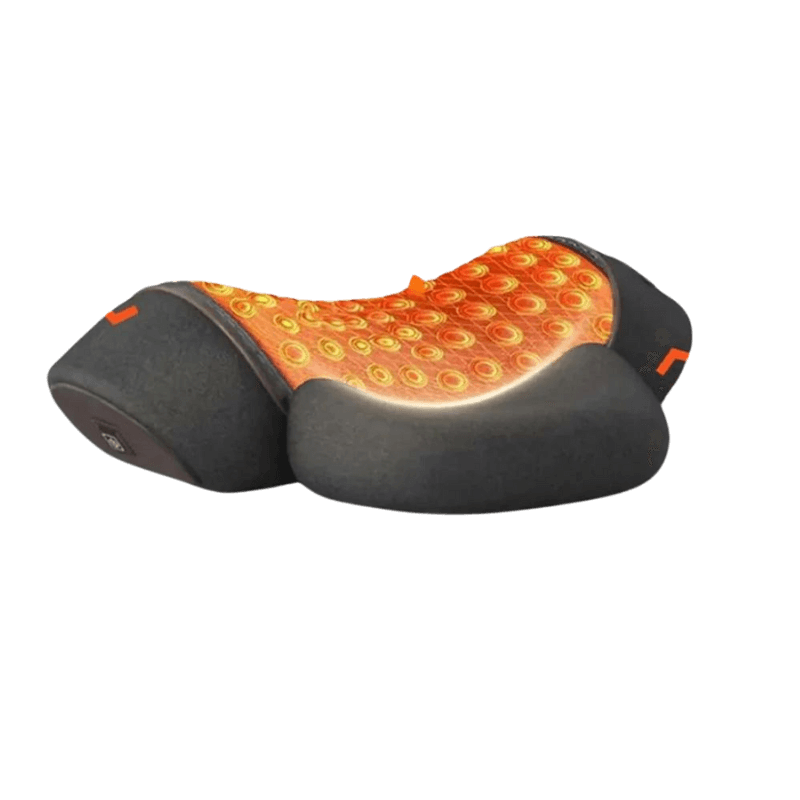Sciatica in the Neck: Symptoms, Causes, and Treatment

Although sciatica is usually associated with the lower back, similar symptoms can occur in the neck. This condition is called cervical radiculopathy or "sciatica in the neck." This article reviews the most common symptoms, causes, and treatment options for sciatica in the neck.
What is sciatica in the neck?
Sciatica in the neck involves irritation of the cervical nerves , which can cause radiating pain, tingling, and numbness in the neck area. Early treatment with rest, medication, and physical therapy can relieve symptoms.
Symptoms of sciatica in the neck
Common symptoms include:
- Pain radiating from the neck down the arm
- Numbness and tingling in the arm and hand
- Muscle weakness in the arm
- Neck pain that worsens with certain movements
- Headache, especially in the back of the head
- Stiffness and limited mobility in the neck
Radiating pain from the neck to the shoulder and arm is often a sign that a nerve root is affected. This sudden or gradual onset of pain can be very limiting for the patient. Numbness in the hand or arm is common and can be a sign that nerve structures are affected. When the symptoms worsen, it can lead to reduced mobility in the neck, which has an impact on everyday activities.
Causes of sciatica in the neck
Several factors can contribute to sciatica-like symptoms in the neck:
- Herniated disc in the cervical spine
- Narrowing of nerve channels (spinal stenosis)
- Age-related changes in the spine
- Whiplash injury
- Overexertion or incorrect posture
A herniated disc is one of the most common causes of sciatica in the neck. This occurs when the soft core of a disc between the vertebrae is squeezed out, causing pressure on nearby nerves. Long-term incorrect strain on the neck muscles can also lead to problems. Many people who work in front of a computer or have other sedentary jobs often experience these problems.
Diagnosis and treatment of sciatica in the neck
| Behandlingsmetod | Beskrivning | Fördelar med ThermoNeck och Traktionskrage |
|---|---|---|
| Fysioterapi | Övningar och stretching | ThermoNeck ger värmeterapi och massage |
| Smärtlindring | Antiinflammatoriska läkemedel | Kan minska behovet av medicin |
| Traktion | Sträcker ut nacken | Traktionskrage ger avlastning och sträckning |
| Värme- och kylterapi | Lindrar smärta och inflammation | ThermoNeck erbjuder både värme- och kylterapi |

How ThermoNeck and Traction Collar can help with sciatica in the neck
ThermoNeck and Traction Collar offer several benefits for people with sciatica-like symptoms in the neck:
- ThermoNeck provides heat therapy and massage to relieve pain and tension
- The traction collar stretches the neck and relieves the nerves
- The combination can help reduce pressure on nerves and relieve inflammation.
- The products can be used at home for regular treatment
- Contributes to improved blood circulation and faster healing
For patients with sciatica in the neck and shoulder, these products can be especially valuable as they are designed to directly affect the affected area. Regular use can help maintain the natural curve of the neck and strengthen the surrounding musculature. This can prevent future problems and promote long-term neck health.
Buy nowConclusion
Sciatica-like symptoms in the neck can be painful and limiting, but with proper diagnosis and treatment, most people can experience significant improvements. By combining conservative treatment methods with the use of supportive devices such as the ThermoNeck and Traction Collar, many can effectively manage their symptoms and improve neck function. It is important to consult a doctor for a proper diagnosis and individualized treatment plan.
Understanding sciatica and its impact on the neck is crucial for effective treatment. Proper knowledge of the symptoms and causes can help the patient seek appropriate care in a timely manner and prevent the condition from worsening.
Frequently Asked Questions (FAQ)
Can sciatica occur in the neck?
Although sciatica is usually associated with the lower back, similar symptoms can occur in the neck, which is called cervical radiculopathy.
How long do sciatica-like symptoms in the neck usually last?
With the right treatment, many people can experience improvement within 4-6 weeks, but this can vary depending on the cause and severity.
How do I use ThermoNeck for sciatica-like symptoms in the neck?
Use ThermoNeck as directed, typically 15-30 minutes daily for best results.
Can the Traction Collar prevent sciatica-like symptoms in the neck?
Seek immediate medical attention if you notice any sores, infections, or noticeable changes in your feet. Even minor changes such as redness that doesn't go away, s Regular use of the Traction Collar can help reduce pressure on nerves and potentially prevent symptoms. skin tags or a new abrasion should be examined by a healthcare professional, as foot problems in a person with diabetes can get worse quickly.
When should I seek medical attention for sciatica-like symptoms in my neck?
Seek medical attention if symptoms persist, worsen over time, or if you experience weakness or numbness in your arm.

